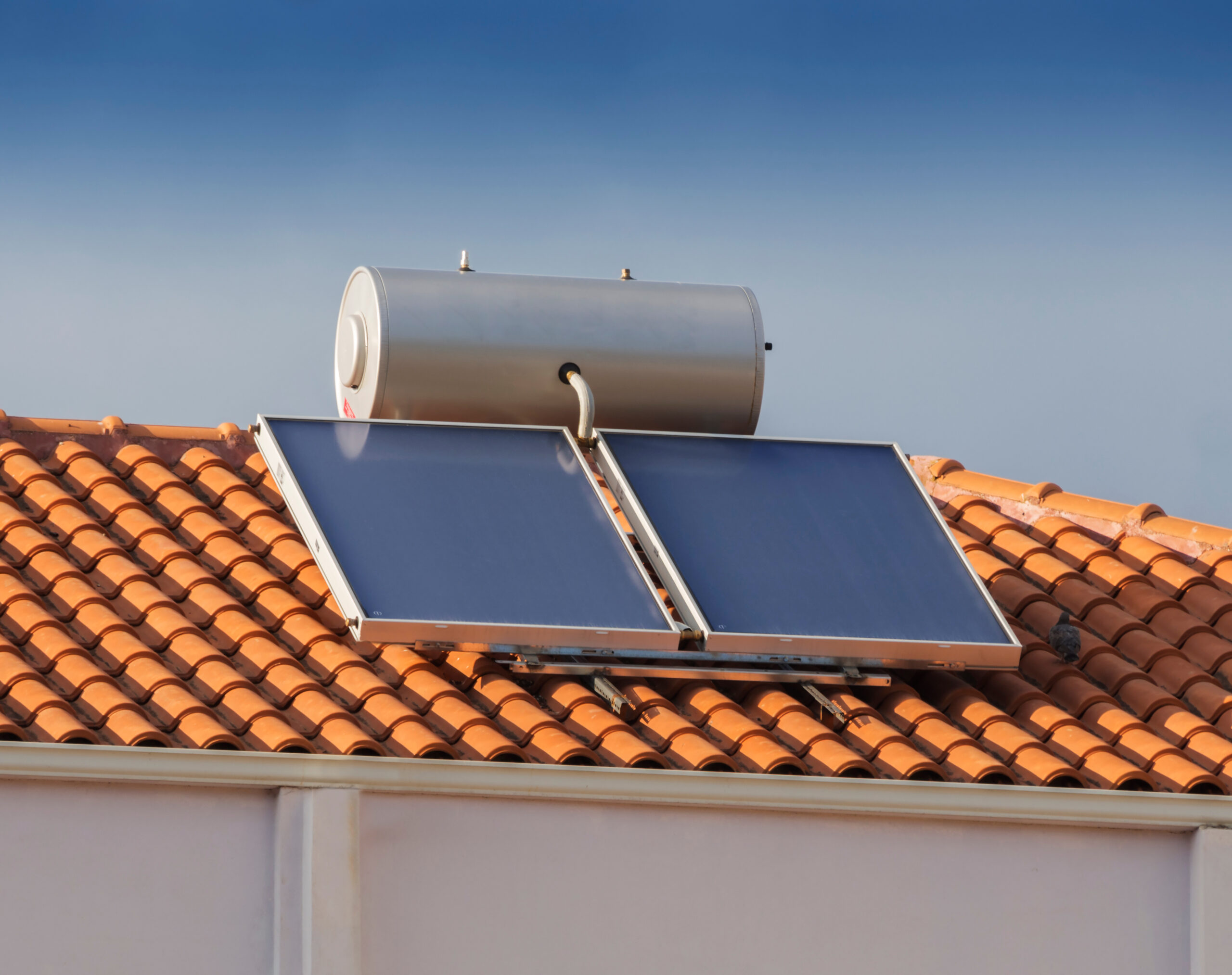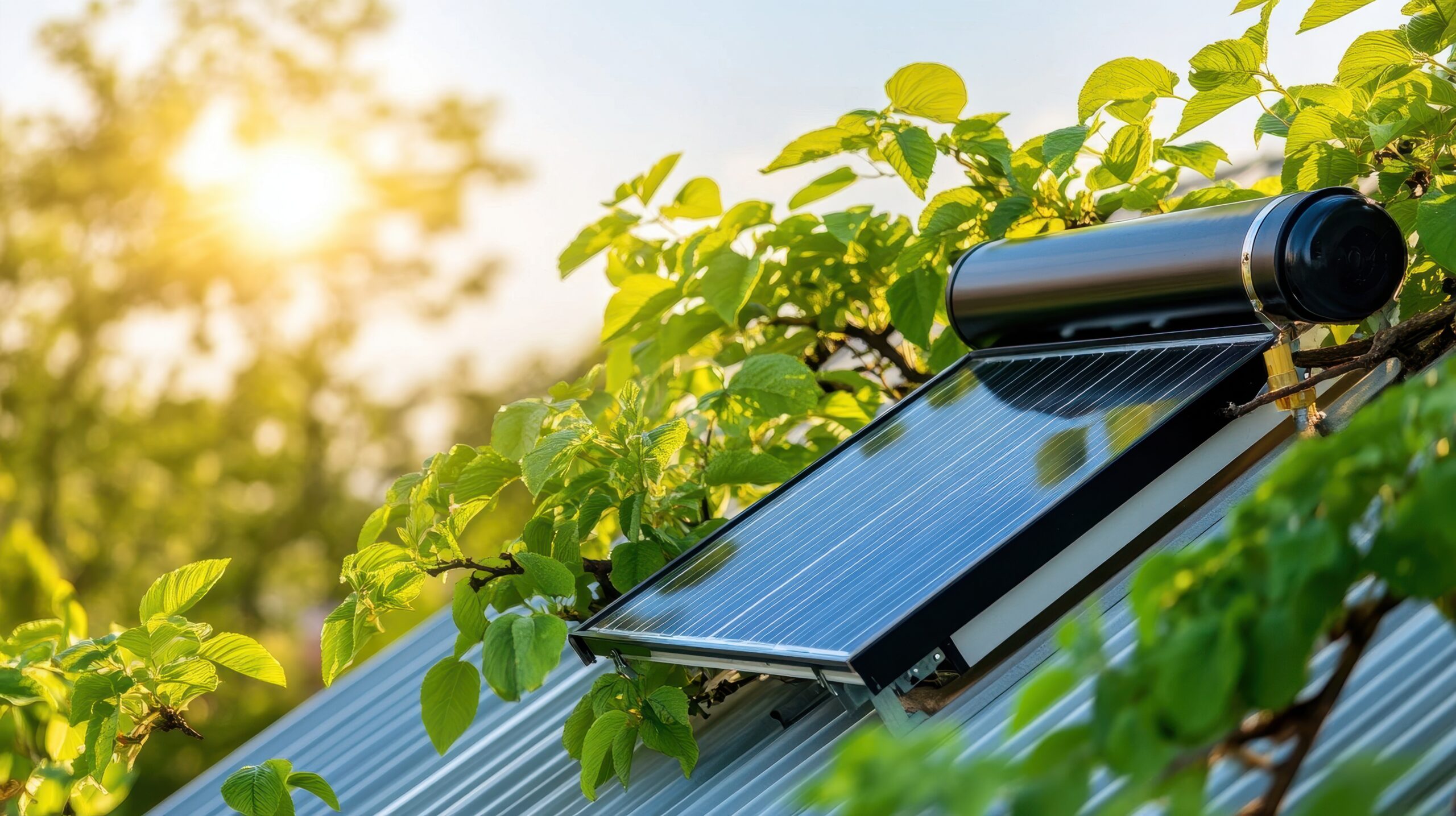Solar hot water systems are a clever way to use the sun’s energy to heat your water at home. These systems capture sunlight and turn it into heat, which then warms up your household water supply. Solar hot water systems can reduce your energy bills by up to 80% while decreasing your carbon footprint by using renewable energy instead of gas or electric boosters.
The sun’s energy is abundant in Australia, especially in Perth where there is plenty of sunshine year-round. By installing a solar hot water system, you’re using the sun as a resource to meet your daily hot water needs. It’s a practical investment that pays for itself over time through energy savings.
These systems are designed to work alongside your existing water heating setup, ensuring you always have hot water even during cloudy days or at night. Modern solar hot water systems are efficient, reliable, and built to withstand Australia’s harsh climate conditions.
Solar Hot Water Systems Facts:
- Solar hot water systems capture sunlight with solar collectors on your roof and transfer that heat to water stored in a storage tank, providing an eco-friendly alternative to conventional water heating.
- These systems continue working even when sunshine is limited thanks to backup heating elements that ensure you never run out of hot water regardless of weather conditions.
- Installing a quality solar hot water system can significantly reduce your household energy costs while contributing to a more sustainable future through renewable energy use.
Fundamentals of Solar Hot Water Systems
Solar hot water systems capture the sun’s energy to heat water for domestic use. These systems reduce energy bills while providing an environmentally friendly alternative to traditional water heating methods.
Components of Solar Hot Water Systems
A solar hot water system consists of several key components working together. The solar power collectors are mounted on your roof to capture sunlight. These collectors contain fluid (either water or heat-transfer fluid) that heats up when exposed to sunlight.
The hot water tank stores the heated water until you need it. Most systems include a backup heating element for cloudy days when solar energy isn’t sufficient.
A heat exchanger is used in systems where the fluid in the solar collectors isn’t directly used as household water. It transfers heat from the collector fluid to your water supply without mixing the two.
The system also includes heat pumps and controllers that manage water flow and temperature. Pipes connect all components, while valves regulate pressure and prevent overheating.
Types of Solar Collectors
Flat plate solar collectors are the most common type in Australia. They consist of an insulated box with a dark absorber plate under a glass or plastic covering. Water or heat-transfer fluid flows through tubes attached to the absorber plate, heating as it passes.
Evacuated tube solar collectors use rows of glass tubes containing absorber plates. The vacuum between tube layers provides excellent insulation, making them more efficient in cooler climates.
Unglazed solar collectors are simpler systems without glass covering and are mainly used for pool heating. They’re less expensive but also less efficient for home hot water.
The choice between these collector types depends on your local climate, hot water needs, and budget. In Perth’s dry climate, flat plate collectors often provide excellent performance.
Solar Thermal vs Solar Electric Panels
Solar panels and solar electric (photovoltaic or PV) panels serve different purposes despite their similar appearance. Solar thermal panels directly heat water flowing through them, converting sunlight to heat energy with 70-80% efficiency.
Solar electric panels convert sunlight to electricity, which could then power an electric hot water system. However, their conversion efficiency is typically only 15-22%.
For water heating specifically, solar thermal systems are more efficient and cost-effective than using solar PV to power an electric water heater. A 4m² solar thermal system can provide up to 80% of a typical household’s hot water needs.
Solar thermal systems need less roof space than equivalent PV systems for water heating. However, PV systems offer more flexibility since the electricity they generate can power anything, not just water heating.
How Solar Hot Water Systems Operate
Solar hot water systems transform sunlight into heat energy to provide households with hot water. These systems use specialised components to capture, transfer and store thermal energy efficiently.
The Process of Solar Water Heating
Solar hot water systems begin with solar collectors mounted on your roof, typically facing north in Australia to maximise sun exposure. These collectors capture solar radiation and convert it to heat energy. The most common collector types are flat-plate collectors and evacuated tube collectors. Flat-plate collectors consist of a dark absorber plate covered by glass, while evacuated tube collectors use glass tubes with vacuum insulation for better efficiency.
When sunlight strikes the collectors, it heats the fluid inside. This fluid can be water flowing directly through the collectors in direct systems, or a heat-transfer fluid like glycol in indirect systems. Glycol is preferred in colder regions as it prevents freezing.
Heat Transfer Mechanisms
Heat transfer occurs through several mechanisms within the system. Conduction happens when heat moves through solid materials in the collectors. Convection occurs as the heated fluid rises naturally or is pumped through the system.
In indirect systems, a heat exchanger transfers thermal energy from the glycol to your household water without mixing the fluids. Heat exchangers come in various designs:
- Shell and tube: Where hot glycol flows through tubes surrounded by water
- Coil-in-tank: Where a coiled pipe containing hot glycol sits inside the water tank
- Plate heat exchangers: Where thin plates separate the two fluids while allowing heat transfer
Heat pipes in evacuated tube collectors provide exceptional heat transfer efficiency by using phase change principles.
Storing Heated Water
The hot water storage tank (often called a hot water cylinder) is crucial for ensuring you have hot water available even when the sun isn’t shining. These insulated tanks minimise heat loss and maintain water temperature for extended periods.
Most systems include stratification, where hotter water naturally rises to the top of the tank while cooler water remains at the bottom. This allows you to draw hot water from the top while cooler water enters the bottom for reheating.
Modern storage tanks feature high-efficiency insulation with heat loss rates of less than 1°C per day. Many tanks include backup heating elements for cloudy days, ensuring you’re never without hot water. The size of your tank should match your household’s consumption patterns, typically ranging from 150 to 300 litres for average Australian homes.
Integration and Backup Systems
Solar hot water systems rarely work in isolation. Most installations combine solar thermal technology with traditional energy sources to ensure hot water is available regardless of weather conditions.
Integration with Traditional Energy Sources
Solar hot water systems are designed to work alongside conventional water heating methods. Most systems include an electric or gas booster, which activates when solar energy alone cannot meet demand. This integration happens automatically through temperature sensors and controllers that monitor water temperature.
During cloudy periods or increased hot water usage, the backup system kicks in. Gas boosters are particularly efficient, heating water quickly when needed. In Australia, gas boosters are popular because they’re cost-effective and produce fewer emissions than electric alternatives.
The integration is seamless—you won’t notice when your system switches from solar to conventional energy. Modern systems feature sophisticated controls that prioritise solar energy whenever possible, only using backup sources when necessary.
Solar Hot Water System as a Supplement
Solar thermal collectors are excellent supplements to existing hot water systems. They can provide 50-90% of your annual hot water needs, depending on your location in Australia and local sunshine hours.
In Perth, where sunlight is abundant, solar hot water systems can contribute significantly to your hot water supply throughout the year. The supplementary nature of these systems means you’re reducing reliance on conventional energy without sacrificing reliability.
Your existing hot water infrastructure doesn’t need complete replacement. Solar thermal collectors can be added to pre-existing systems, making them more efficient while reducing energy bills. This supplementary approach makes solar hot water a practical entry point into renewable energy for many households.
During summer, your solar hot water system might handle all your hot water needs. In winter, it continues to pre-heat water, reducing the workload on your conventional system.
Interested in Solar Hot Water Systems? Contact EuroSun Today!
Cut your energy bills and go green with a EuroSun solar hot water system! Designed for efficiency and reliability, our systems harness Australia’s sunshine to keep your water hot year-round. Ready to make the switch?
Contact us today and start saving!


